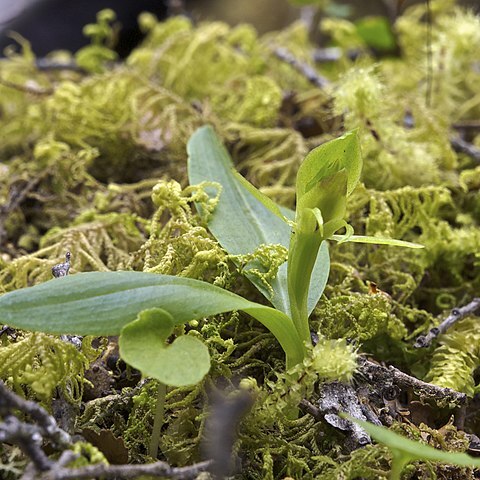Leaves 60–100 × 20–30 mm. Flower stem 20–40 mm long. Flower erect or obliquely erect, 13–16 × 25–30 mm, usually green, sometimes with pinkish tinges; labellum green or reddish with green; reddish or blackish calli. Dorsal sepal 13–16 × 5–7 mm; apical club c. 0.5 mm long. Lateral sepals 10–12 × 3 mm, curved below labellum; apical clubs c. 1 mm long. Petals incurved to spreading, 10–12 × 3.5 mm. Labellum obliquely erect, narrowly ovate to nearly triangular, 9–12 × 7–8 mm, tip often reddish brown. Calli 2–12, sessile, rounded, flattish or forming ridges. Column 6–8 × 4–5 mm.

